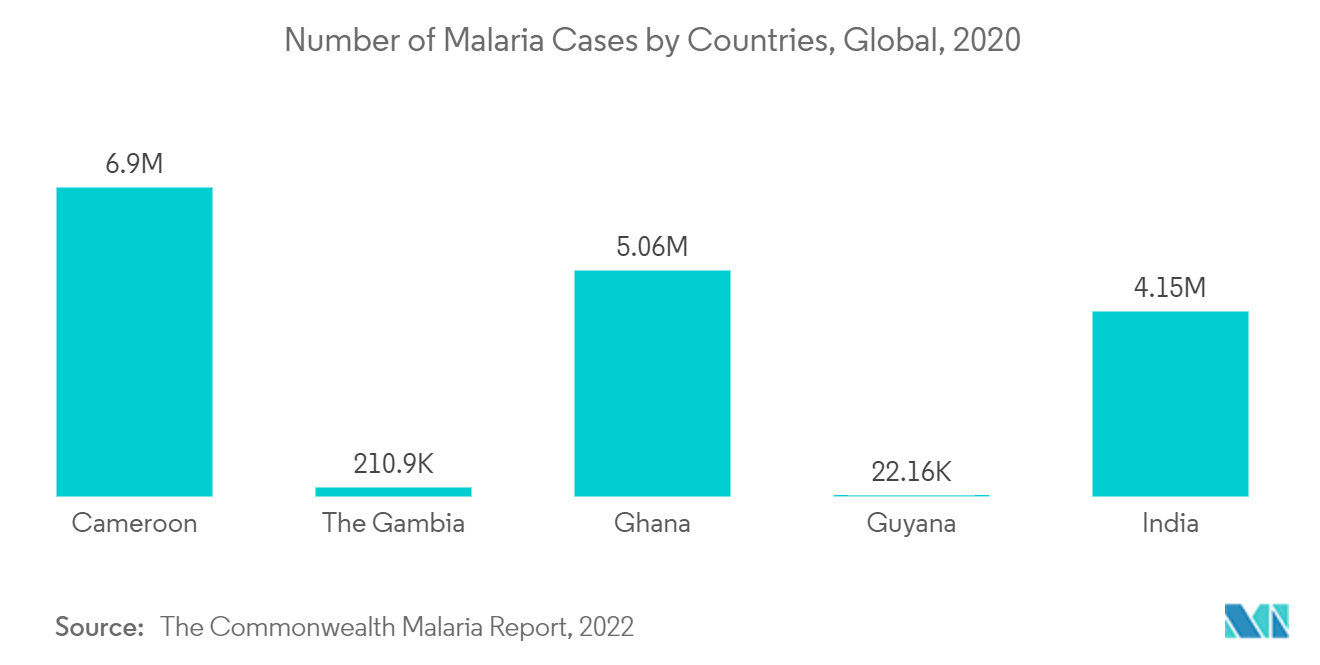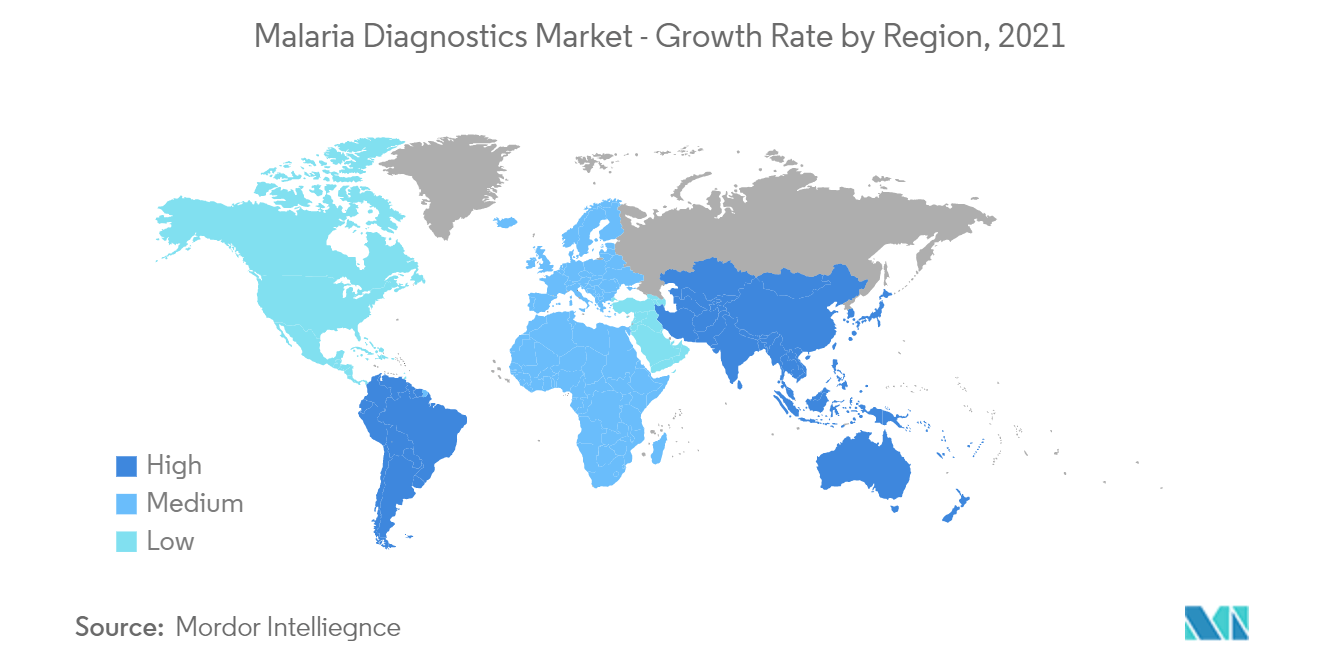Market Trends of Global Malaria Diagnostics Industry
This section covers the major market trends shaping the Malaria Diagnostics Market according to our research experts:
Microscopic Diagnostics is Expected to Hold the Highest Market Share in the Technology Segment
Microscopy diagnosis of malaria is a relatively simple and established technique that is familiar to most laboratory personnel. Most laboratories that can perform a routine hematology test are equipped to perform a thin and thick malaria smear. This test is used extensively for the detection of malaria since it can provide valuable information within a few hours of collecting the blood. Initially, the test is used to determine whether malaria parasites are present in the patient's blood. Once the diagnosis is established by detecting parasites in the thick smear, the laboratorian can then examine the thin smear to determine the malaria species and the parasitemia, or the percentage of the patient's red blood cells that are infected with malaria parasites. Microscopy results are only as reliable as the laboratories performing the tests. In the United States, there are, on average, 2,000 cases of malaria diagnosed and reported each year. Similarly, research studies provide insight into the usage of microscopy for the diagnosis of malaria. For instance, in June 2021, a research study published titled "Diagnostic performance of the rapid diagnostic test, light microscopy and polymerase chain reaction during a mass survey conducted in low and high malaria-endemic areas from two North-Eastern states of India" stated that malaria diagnosis is routinely performed by microscopy and rapid diagnostic tests (RDTs) in the field settings; however, their performance may vary across regions, age and asymptomatic status. A total of 3,322 individuals were screened for malaria using RDT, microscopy, and PCR, and measures of diagnostic accuracy were estimated. The conventional diagnostic tools (RDT and microscopy) detected malaria in children with nearly twofold greater sensitivity than in adults. Thus, such studies provide insight into the advantages of using microscopy for malaria diagnosis. Hence, such studies are expected to increase the market growth. Expansion by key market players is another factor in market growth. For instance, in June 2021, Nikon Corporation expanded the Australian subsidiary, Nikon Australia, through the addition of the Healthcare Business Unit that will focus on the expansion and development of its microscopes across New Zealand, Australia, and the Pacific region. Hence, owing to the above-mentioned factors, the microscopy diagnosis segment is expected to have a significant market share over the forecast period.

Asia-Pacific & Middle East Region is Expected to Hold a Significant Market Share in the Malaria Diagnostics Market Over Forecast Period
The Middle East and Africa region are expected to retain dominance in the market share over the forecast period, due to the rising investments by the developed countries, such as the United States and the United Kingdom, larger patient populations, coupled the rising focus of the World Health Organization (WHO) to reduce the mortality rate of malaria in the African countries. According to the July 2022 data published by the World Health Organization, Sub-Saharan Africa likely continues to endure the burden of malaria, accounting for approximately 95% of all cases and 96% of all deaths. Further, according to the data published by the World Health Organization, in 2021, the evidence of the occurrence of mutations linked to partial artemisinin, which is the first-line treatment for uncomplicated P. falciparum malaria, resistance found in Rwanda in Africa. P. falciparum is the most prevalent malarial parasite in the region, accounting for an estimated 99% of all cases in Africa.
According to the 2021 World Malaria Report by the World Health Organization, in 2020, about 228,000 new cases of malaria were recorded in the WHO Africa region and 5,700 new malaria cases in the Eastern Mediterranean region. Also, as per the same source, the case of malaria is increasing in this region over the years and thus, it is anticipated that the demand for malaria diagnostics products to be high in the region over the forecast period. In addition, the rising need for early detection and increased awareness regarding malaria diagnosis is expected to propel the demand for the malaria diagnostics market in this region. Therefore, owing to the above-mentioned factors, the Asia-Pacific & Middle East region is expected to occupy a significant share of the malaria diagnostics market over the forecast period.

